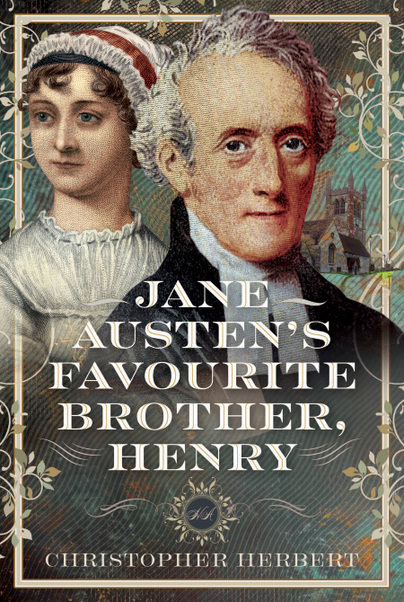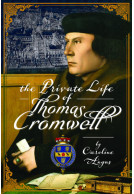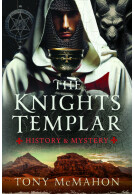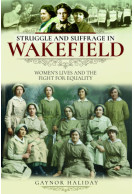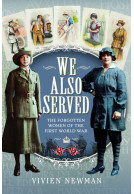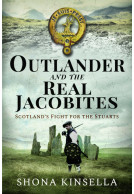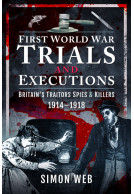Jane Austen’s Favourite Brother, Henry (Hardback)
Imprint: Pen & Sword History
Pages: 248
Illustrations: 20 mono illustrations
ISBN: 9781036133160
Published: 30th May 2025
(click here for international delivery rates)
Need a currency converter? Check XE.com for live rates
Henry Austen, Jane Austen’s favourite brother, was born into a large and lively clergy family in Hampshire. Of her seven siblings, Henry most shared Jane’s mischievous wit and facility with words and his support enabled the publication of her novels.
Henry’s own life was much more incident-packed than his sister’s. By turns he was an academic, magazine editor, soldier, financier and banker, bankrupt, and finally, clergyman. His career hit the heights of Regency society, becoming linked with the Prince Regent’s set, before plummeting to the social disgrace and economic disaster of bankruptcy. Many of his activities hovered on the brink of illegality and his marriage to the enigmatic French countess, Eliza de Feuillide, also raised questions and eyebrows. Nevertheless, his kindness, charm and his loyalty to Jane never wavered. He ensured her burial in Winchester Cathedral, and he ended his days as a hard-working curate in a Surrey market town and in Hampshire villages.
His life sheds a fascinating light on the vagaries of early nineteenth century society and this new and important study examines both his relationships within the Austen family and the many social milieux in which he worked, which, through his recounting of his experiences, may have provided inspiration for some of Jane’s plots and characters. As Jane herself wrote to Cassandra, 'Oh, what a Henry!'
Rating: 5 out of 5 stars
NetGalley, Robin Joyce
Christoher Herbert’s history employs one of the most useful strategies when dealing with a subject for whom the material is sparse. In this case, there is an abundance of material about Jane Austen who has been the subject of so many biographies. However, Herbert does not rely solely on this and has adroitly using his independent research, bolstering it with material that sets the context for events that are not recorded. He also uses the more conventional way of contributing to research when dealing with a writer – studying the author’s work for clues. In this case, both Jane and Henry Austen’s writing. This is a work of substance, accessible writing, a broad history of the time and social mores, and an intriguing insight into Henry and his family, including Jane for whom it becomes clear, Henry was indeed her favourite brother.
There are wonderfully comic passages – the discussion of studying at Oxford and Cambridge in the period was delightful. Less attractive is the recognition of the family’s slavery connections. However, these topics and a multitude of others, including reference to Austen’s novels, provide a picture of the father of these two affectionate siblings. Valuable information about the way in which the siblings were raised and educated and the ideas that permeated their lives, is also afforded though reference to Cassandra Leigh’s background. A Thomas Gainsborough painting also provides information about the society in which the siblings were raised – a society in which Jethro Tull’s invention was a part, for example. Although wider changes in society may not feature in Austen’s novels, Herbert provides a picture that demonstrates her choice of background was one of many available to her.
Herbert’s detailed Austen family background then makes way for details about Henry and the profession and life he chose. A rebellion? A well-considered change in direction? Henry’s essays are deployed to help answer these and other questions about Henry’s life. Again, comic touches are laid side by side by more serious aspects, keeping the narrative lively and accessible. Although Herbert concludes that questions remain about Henry Austen, this work shows that his commitment to publication of Jane Austen’s work is a defining feature of the relationship between the two. It also, within the constraints Herbert acknowledges, is an absorbing study of a period, a family, and a sibling relationship.
About Dr Christopher Herbert
Dr Christopher Herbert, a former Bishop of St Albans, member of the House of Lords and Visiting Professor at the University of Surrey, is an experienced and widely read author. His books include Foreshadowing the Reformation: Art and religion in the 15th century Netherlands, plus others about the history of Farnham, Surrey where he now lives.
His interest in Henry Austen began with the chance discovery of a curious note written in a church Register. The biography grew from there…
See his website: www.threeabbeys.org.uk







